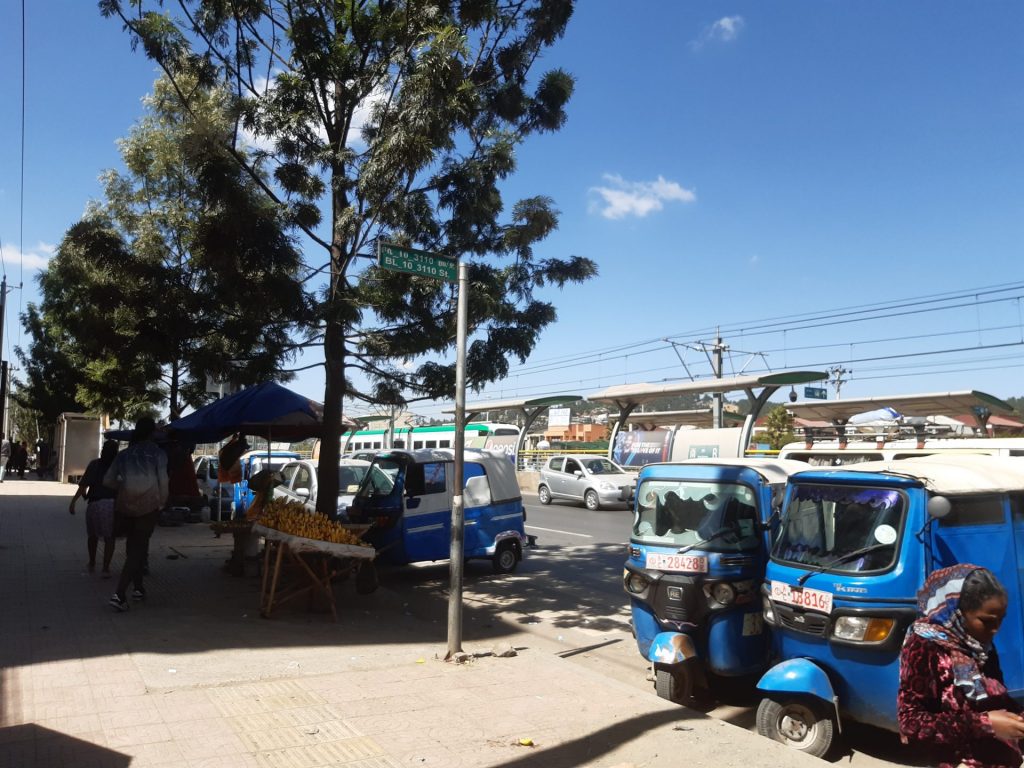
Week 1
I arrived in Addis Ababa in the middle of the night, and the drive to my family’s flat in the city was somewhat exciting, familiar and safe. I was born in Ethiopia and have spent the first 6 years of my life in Addis Ababa. Already in the early days I noticed that even for me there was some getting used to things. As an example, I was used to hugging when meeting friends and family (even my Ethiopian relatives in Germany). I was surprised as some of my family members in Addis started to give me kisses on the cheeks right and left before hugging. Although I speak Amharic, I realized quickly that my version of the language is that of an older generation as I only speak it with my mother. My vocabulary has stayed constant and unchanged over the years, which is why my cousins made to teach me some slangs not to stand out in the crowd in Addis. An example is the word like አድናቂ ነው to refer to someone liking something (translated into he is an admirer of something) instead of just saying he likes it ይወዳል. Other words like I am divorcing you (ተፋቺኝ) instead of saying I do want anything to do with you. The first days I was walking around the city trying to remember and compare the image I had in my memory with the reality that was in front of me.
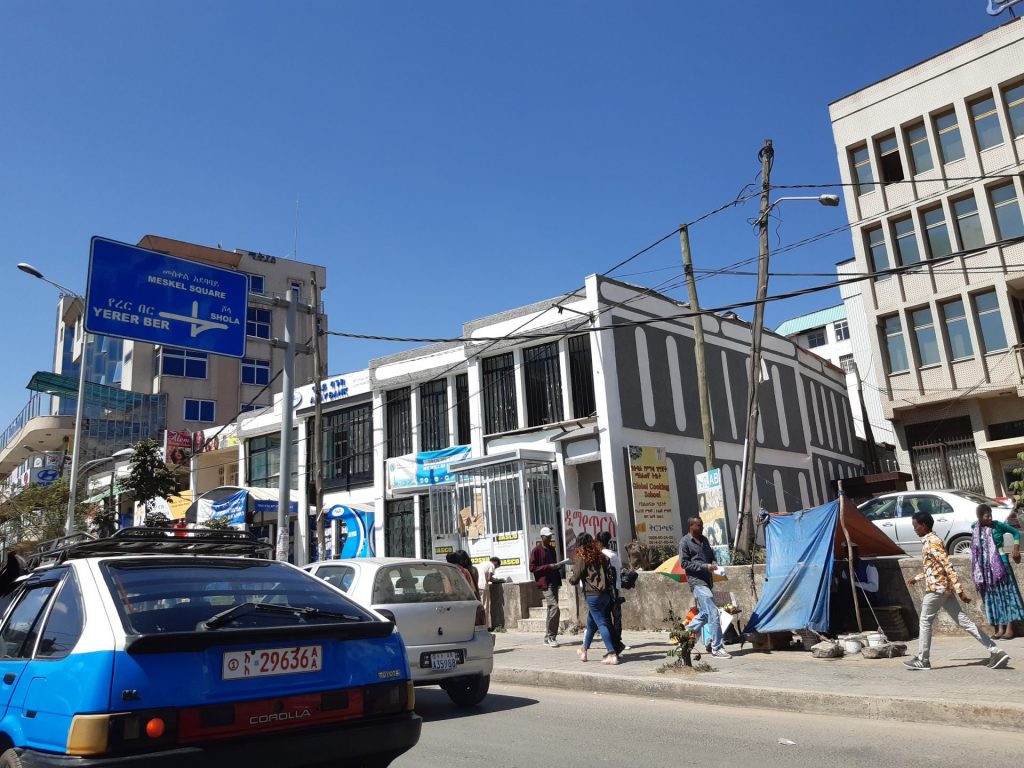
What struck me other than the many high-rise buildings that have been built, is that there are a lot more ጫት መሸጥ (khat shops) than I could remember. Khat or qat is a plant that contains alkaloid cathinone, a stimulant, causing excitement, euphoria, confidence, friendliness, amongst other things. But it can be very damaging to the health causing increased blood pressure, psychosis and thought disorder. Also, I saw people chewing khat everywhere I went like in other people’s houses, shops and on the street. Some of the people I would ask told me that they would chew it daily, mostly after a long day of work.
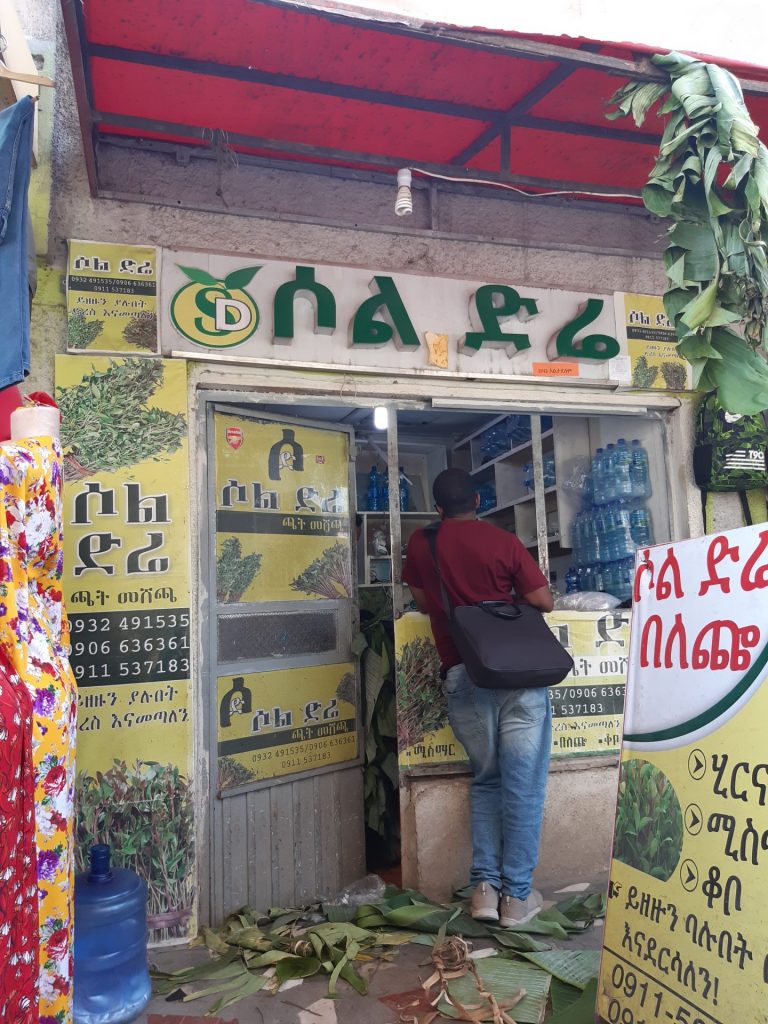
Politics in Addis and Adama
In Addis Ababa, the first thing people around would talk about after the usual small talk is politics. In some cases, such as in a taxi or a Ride (Ethiopian version of an Uber) politics is small talk. On television, most of the places I went to had either the news or a political commentary program in the background. Most of the arguments I heard were that the country is very much ethnically divided, and we need unity and not the existing division between the population. Many stated that Prime minster Abiy Ahmed has not been able to tackle the division of different ethnic communities. In Addis Ababa, it seems that many I have talked to are against the previous government’s politicization of ethnic identity. They stated that it makes it very difficult to call for one Ethiopian identity. One Ride driver in his words “the only thing our Prime minster is good at is shaking hands and hugging world leaders aboard [foreign countries], here in our country he made things worse. You know how much the price for teff has increased during his time? The only thing keeping us away from starvation is God. Come on, this is ridiculous, and then they go ahead and give him that noble prize, it is a joke. All he does is talk, talk, talk, we need peace and love in our country! Ha! May God keep our country safe!”
Teff is a crop that is essential for the Ethiopian diet, from which they make ingera. It is a nutrition that is not only important for meals, but Ethiopians also use it to make a traditional beer called t’ ella and other alcoholic drinks such as arak’e.
On the 7th of January Ethiopian Christmas was celebrated annually by many Orthodox Christians. The date derives from the Ethiopian calendar. There is a gap between seven to eight years between the Ethiopian and the Gregorian calendars due to an alternative calculation when determining the date of the Annunciation to the Virgin Mary. This day is a public holiday for the general population, and schools and most businesses are closed. As such, I had more time to spend with my family and friends before starting my internship, mostly eating ingera.
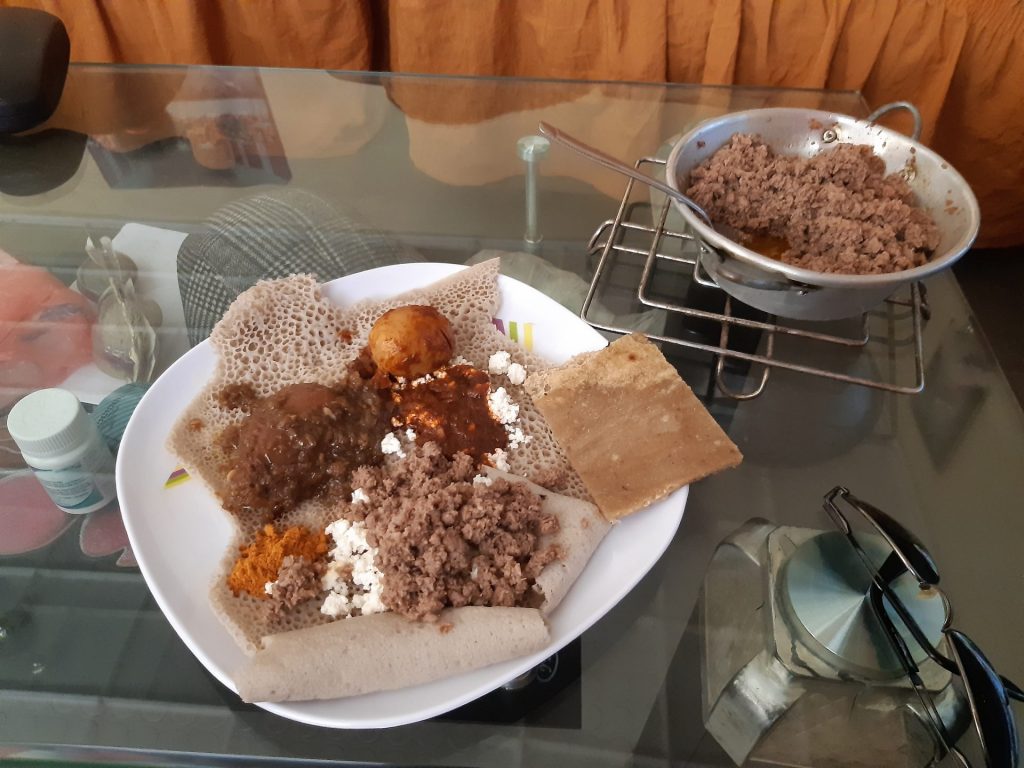
I went to a city formerly called ናዝሬት Nazret, a town about 100 km southeast of Addis Ababa. It is a town where my mother was born and where most of my family now resides. It is now officially called Adama, a city in central Oromia. It is also the city wherein October 2019, clashes occurred as a result of an Ethiopian media personality Jawar Mohammed allegedly being attacked by the police. This claim sparked nationwide riots by a group called Qeero (movement of young Oromos in Ethiopia). Qeero protested in different parts of the country including Addis Ababa, Ambo and Adama. In Adama, people I talked to were very much politically engaged and mentioned the riot that made them feel unsafe to be in Adama. They also stated that the riots elsewhere had a spilling over effect on the community in Adama. Some who are initially from other cities in Ethiopia were accused and even arrested for attempting to burn a mosque and a church to cause religious and ethnic clashes. The situation has calmed down since October; nonetheless, I have yet to gather more information on the matter.
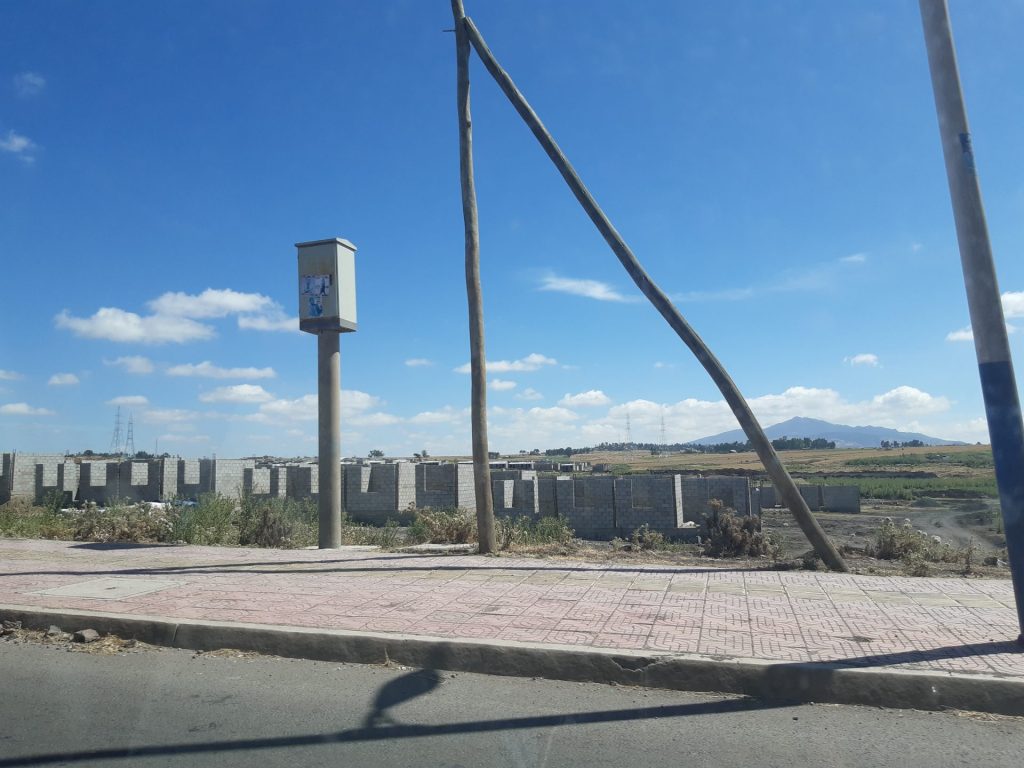
Week 2 Internship and Research
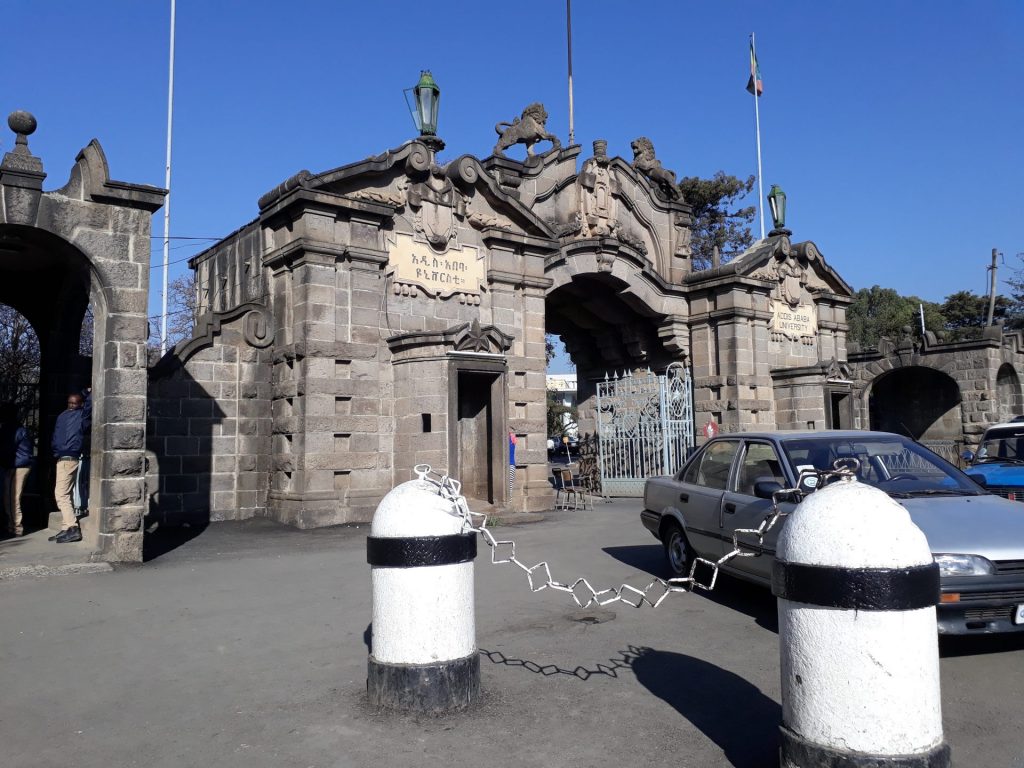
A couple days after my arrival, I went to Addis Ababa University, where I will do my internship for the coming weeks. Finding the university was not an issue as I had people with me who knew their way through the city. Also, inside the gates of the university, I was able to ask around for the department building in Amharic. This made many things easy for me. Addis Ababa University (AAU) is the oldest and largest national university based in Addis Ababa. It has thirteen campuses. Twelve of these are in Addis Ababa and one in Debre Zeit 45 kilometres away from the capital. AAU collaborates with the Bonn International Center for Conversion (BICC) on the empirical research on Eritrean refugees in Ethiopia. This is done through Transnational Figurations of Displacement TRAFIG. AAU and TRAFIG will conduct field research from 2019-2021 on long-lasting displacement situations at multiple sites in Asia, Africa and Europe and analyse options to improve displaced people´s lives. AAU is also responsible for the revision of Ethiopia´s policy and legal structure and contribution to solving protracted displacement situations in Ethiopia. The department of anthropology works with TRAFIG in the development of alternative solutions to particularly protracted displacement meaning those who have been displaced for 5 years or more. The project brings together regional and local researchers and research assistants who are trained on research methods, the use of audio and visual techniques of data collection and documentation as well as the programs used for data storing of the protracted displaced people in Ethiopia. My role as an intern is to assist the research team in conducting surveys, semi-structured and biographic interviews, that will become part of the database of TRAFIG.
I was very nervous about meeting the Professor I will be working for the coming weeks. However, I was delighted to find him to be very friendly and helpful. I also met one of the researchers for the TRAFIG called Mulu, who was kind enough to talk to me about what had already been done by the team over a cup of coffee. I was happy to hear that the TRAFIG project also focuses on the topic of integration from a socio-economic perspective to explore and assess the livelihood of Eritrean refugees. In the individual research for my master thesis, I will investigate the existing trends of local integration and the lived reality of Eritrean refugees with the host community in Addis Ababa. I will examine if cultural similarities lead to the Eritreans sense of belonging or idealising their country of origin. Moreover, my research seeks to analyze the perception of local Ethiopian communities towards the integration of Eritrean refugees.
Day 1 of My Internship
On the first day of my internship, my alarm woke me up at 7 am. After an hour, I took a Ride to the university that took me 1 hour. At 9 am, Mulu, a PhD student and a researcher, arrived at the university café. For some reason, I was very nervous. However, she made me feel very comfortable. After a beautiful cup of Ethiopian caffè macchiato, we went together in the library. After some technical issues with the recording of an interview, which I had been assigned to translate and transcribe, I officially started my internship. For the next 8 hours apart from lunch break, I would listen to a recording of a refugee narrating his experience in Amharic and then translate it into written English. At the end of the day, I was exhausted. However, I was also very glad for having the opportunity to work at the university.
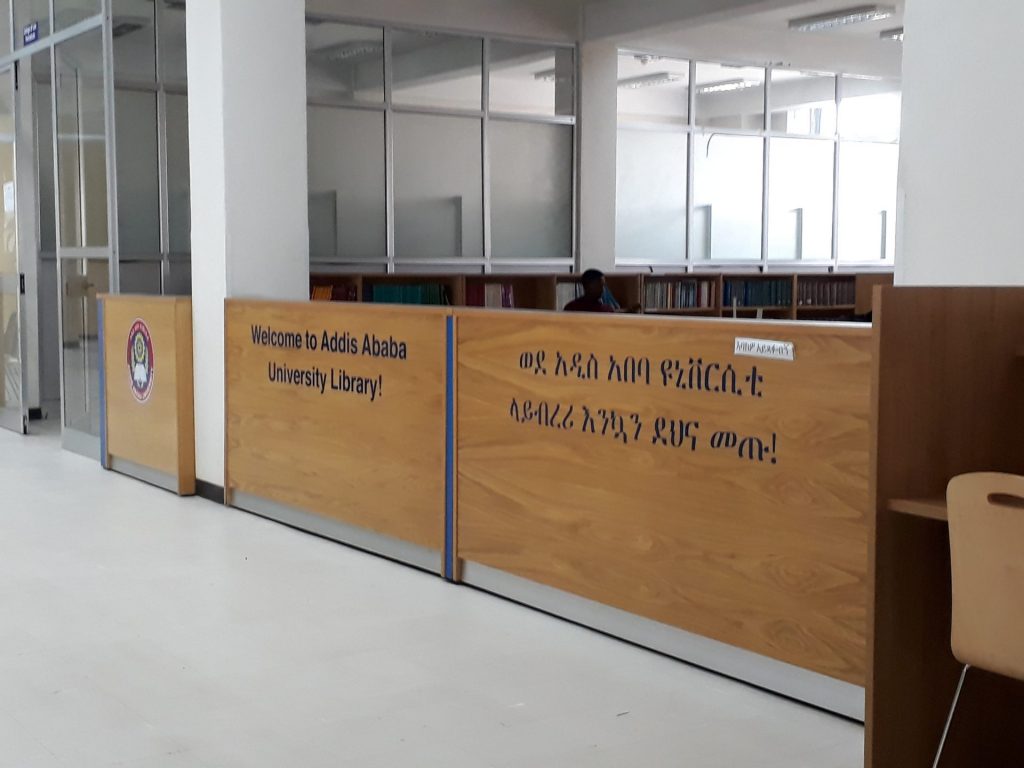
First Ethnographic Site
The second weekend in Addis Ababa I decided to go to my first ethnographic site to an area called Ak’ak’I Besek’ a where I had been told that many Eritrean refugees reside.Moreover, my cousin also lives in that area. As such, I left the flat at 8 am to go. The first thing I did was go to a café where I had traditional Ethiopian coffee. Sitting there, I noticed that I could hear a lot of Tigrigna (official language in Eritrea and some parts of Ethiopia).
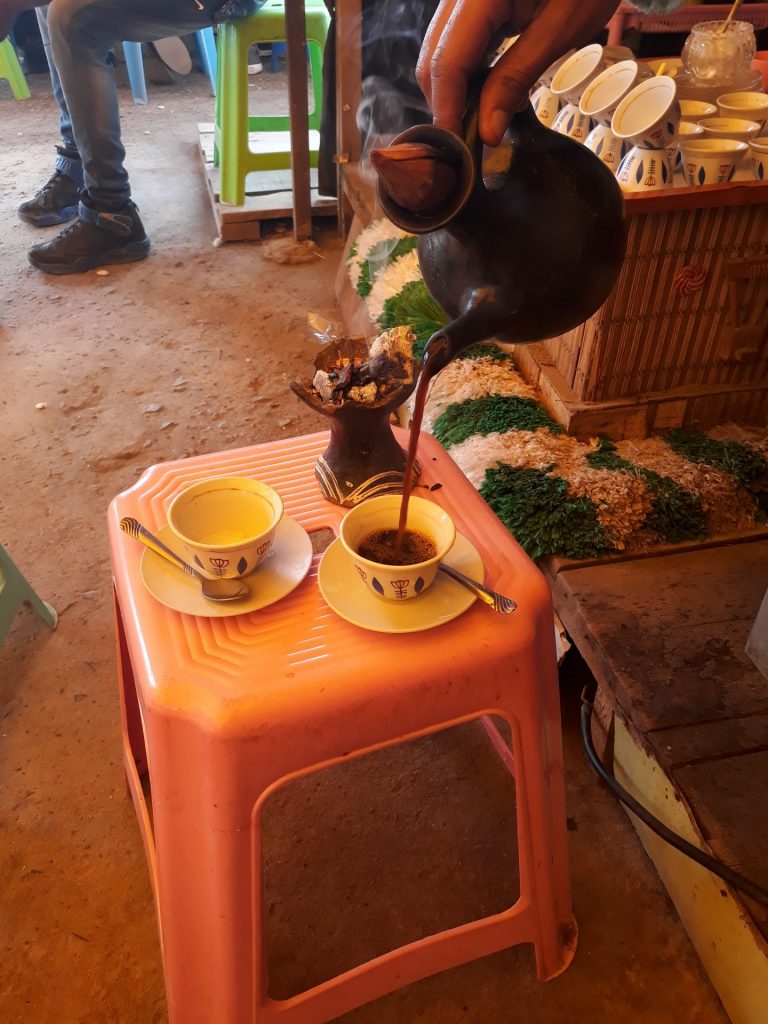
The woman making the coffee started talking to me as she noticed that I was not from the area. She even assumed that I spoke Tigrigna, which surprised me but confirmed that most of her clients speak it. Sitting next to her coffee making station, on my left were a group of young men playing a game I had seen before in Egypt called dominoes. I asked her about it, and she said it is a game that they (referring to Eritreans) play a lot. In the middle were three young men playing on a pool table. To my right were two men playing a different pool game ከረምቡላ (Eritreans, Ethiopians) whilst many others watched game. I sat there for hours as some came and went. The games were played with money bets. I have learned that for each game, one has to pay either for the round or per hour. The woman making coffee would sometimes make food for the guests such as ful mudammas (beans made of tomatoes and oil) or scrambled eggs. All the food seemed familiar to me until I saw that she brought a big plate of small cut bread mixed with eggs, and to my biggest surprised she added Joghurt. She gave it to 4 young men who began to eat it with soup, which is unusual in Ethiopia as most of the food is eaten with our hands. I asked her about it and she replied that it was ፋታ Fata, she then added that it is “their” referring to Eritrean’s food. She also added that its very slimy, but that they like it. After the coffee, I walked around the area, where I noticed that most of the buildings are living spaces and condominiums. These were in different colors ranging from red, yellow and grey. During the day, there we not a lot of people on the street fearing the burning sun. However, around 5 pm more and more people started to come out of their flats.
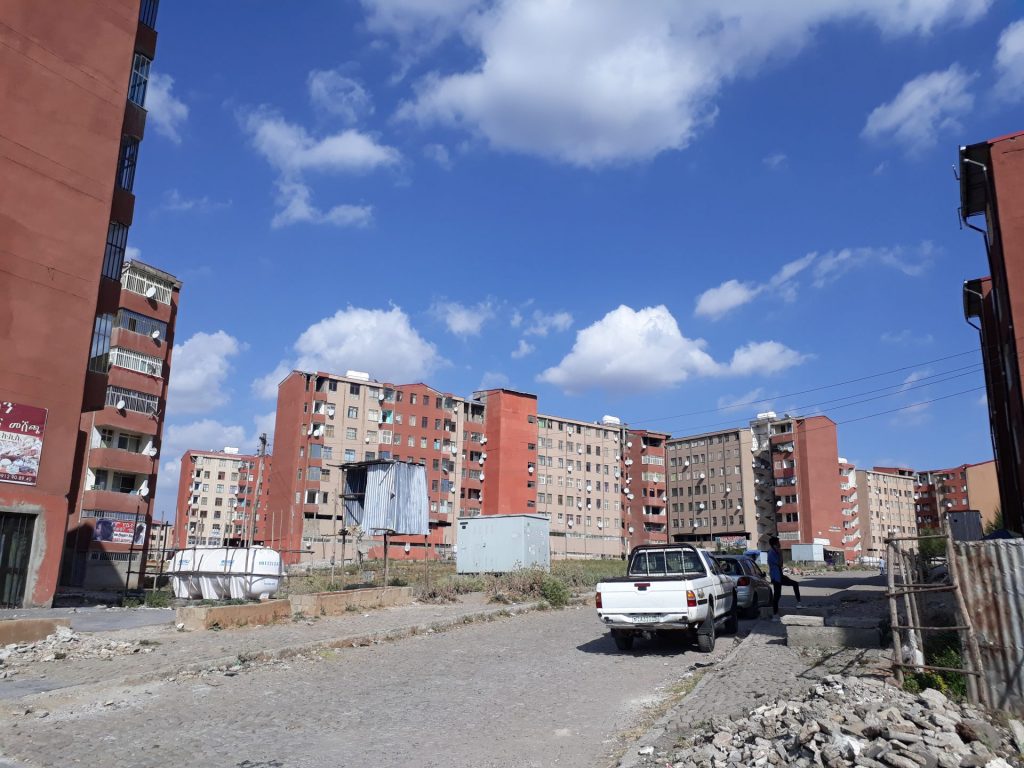

Children started playing on the streets. I went back to the area I was sitting, this time seated at another café right next to where I previously was. To my surprise, many of the men I saw earlier met again. This time they had a glass of beer in their hands instead of a cup of coffee. Again, I heard a lot of Tigrigna, especially when the football game on Tv got heated and they would shout at every missing goal.
All photographs © 2020 Melat Pusch

